Introduction to earth science -> earth's surface
Earth's Surface
The Earth's surface is the outermost layer of the planet, which includes the continents, oceans, and all other landforms. It is constantly changing due to natural processes such as erosion, weathering, and plate tectonics.
Composition of the Earth's Surface
The Earth's surface is composed of different types of materials, including:
- Continents: Large landmasses that make up the Earth's surface, such as North America, South America, Europe, Asia, Africa, Australia, and Antarctica.
- Oceans: Large bodies of saltwater that cover about 70% of the Earth's surface, including the Pacific Ocean, Atlantic Ocean, Indian Ocean, Southern Ocean, and Arctic Ocean.
- Landforms: Various physical features on the Earth's surface, such as mountains, valleys, plains, plateaus, and deserts.
- Soil: The top layer of the Earth's surface that supports plant growth and is formed by the weathering of rocks and organic matter.
- Water bodies: Including rivers, lakes, and seas, which are essential for supporting life on Earth.
Processes Affecting the Earth's Surface
Several natural processes constantly shape and change the Earth's surface, including:
- Erosion: The process of wearing away and transporting soil, rocks, and other materials by wind, water, or ice.
- Weathering: The breakdown of rocks and minerals at or near the Earth's surface into smaller particles and dissolved substances by physical, chemical, or biological processes.
- Plate Tectonics: The movement and interaction of large rock plates that make up the Earth's outer shell, leading to the formation of mountains, earthquakes, and volcanic activity.
- Deposition: The process by which eroded materials are deposited in a new location, forming sedimentary layers over time.
Importance of Studying Earth's Surface
Studying the Earth's surface is crucial for understanding the planet's geological and environmental processes, as well as its impact on human civilization. It helps scientists and geologists predict natural disasters, manage natural resources, and develop sustainable land use practices.
Key Concepts to Remember
When studying the Earth's surface, it's important to remember the following key concepts:
- The Earth's surface is constantly changing due to natural processes such as erosion, weathering, and plate tectonics.
- It is composed of continents, oceans, landforms, soil, and various water bodies.
- Natural processes like erosion, weathering, and deposition play a significant role in shaping the Earth's surface.
- Studying the Earth's surface is essential for understanding geological processes, predicting natural disasters, and managing natural resources.
Study Guide Questions
- What are the main components of the Earth's surface?
- How do erosion and weathering contribute to shaping the Earth's surface?
- Explain the concept of plate tectonics and its impact on the Earth's surface.
- Why is it important to study the Earth's surface?
By understanding the Earth's surface and the processes that shape it, we gain a greater appreciation for the dynamic and ever-changing nature of our planet.
.◂Science Worksheets and Study Guides Sixth Grade. Introduction to earth science
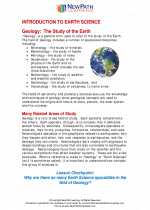
 Activity Lesson
Activity Lesson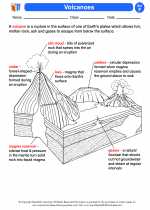
 Worksheet/Answer key
Worksheet/Answer key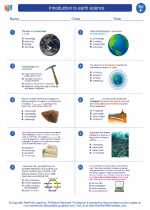
 Worksheet/Answer key
Worksheet/Answer key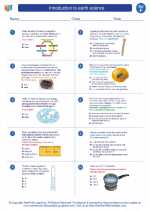
 Worksheet/Answer key
Worksheet/Answer key
 Vocabulary/Answer key
Vocabulary/Answer key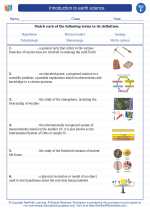
 Vocabulary/Answer key
Vocabulary/Answer key
